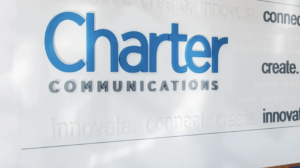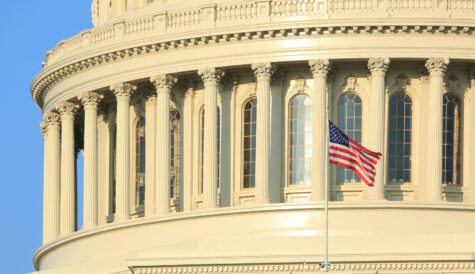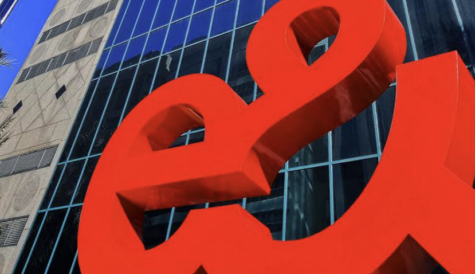Does the Disney and Charter dispute mark the end of pay TV in the US?
 The pay TV industry has survived another fight against SVODs this week, following last month’s carriage deal battle between Disney and US pay TV outfit Charter Communications which was called to an end with a new signed agreement. The standoff between the two parties led to a 10-day blackout which saw Disney-operated channels in the US cut off to 15 million customers on Charter platforms, including leading sports channel ESPN, disrupting coverage of the US Open.
The pay TV industry has survived another fight against SVODs this week, following last month’s carriage deal battle between Disney and US pay TV outfit Charter Communications which was called to an end with a new signed agreement. The standoff between the two parties led to a 10-day blackout which saw Disney-operated channels in the US cut off to 15 million customers on Charter platforms, including leading sports channel ESPN, disrupting coverage of the US Open.
The two companies went back and forth, with claims from Charter that Disney was unwilling to consider innovative carriage arrangements, and instead is attempting to just push through aggressive price increases, despite a significant drop of viewership across Walt Disney Company’s cable catalogue. While, Disney said the pay TV giant had rejected multiple of its offers ahead of the August 31 deadline resolution.
The renewed deal includes the return of 19 Disney channels such as ABC, FX and ESPN to Charter’s Spectrum TV customers. However, excludes the return of eight Disney channels to the US cableco, including FXX, Nat Geo Wild, Nat Geo Mundo, Disney Junior, Baby TV, Disney XD, Freeform and FXM. Nevertheless, regardless of the resolution, the Disney and Charter dispute has pointed to a wider concern on whether the death of pay TV in the US is soon approaching, with cable bundling also at risk.
The growing force of streaming has driven cord-cutting amongst viewers, with reports of global OTT TV episode and film revenues predicted to reach $215 billion by 2029, with SVOD the principal OTT revenue source, according to Digital TV Research. In the height of SVODs and AVODs domination, the focus has been shifted to streaming for content providers like Disney. Media research firm, Omdia reported in June, Netflix subscriptions surpassed all US pay-TV subscriptions combined at the end of 2022 as pay TV declines to 52%. Seemingly, pay TV has become an outdated model with a growing new generation of viewers. Thus, is evident why cable bundle packages may be less attractive to viewers and a less of a priority among pay TV providers to invest in programming that does not hold as much value
“This all puts to question the value of content and how much exclusive value SVOD brings. If content between SVOD and pay TV is not exclusive pay TV operators have a strong hand in requesting that streaming services get bundled into the cable package. In the US we are already seeing cable providers offer SVOD services build into their platforms and offers upon sign up which was part of the solution ending the Disney/Charter dispute,” says Omdia’s analysts Michael Frank and Sarah Henschel.
However, sports presence across linear is still significantly strong and is where it gives Charter some leverage over Disney, with sports streaming still on the rise and a more of a complex market to tackle with sport rights holders. Along with the cost of living crisis which has seen a boost of subscription churn and viewers are seeking out cheaper options to get their content such as pay TV.
The Omdia analysts says, “Sports is one of the main types of content holding the cable bundle together. However, the death of the cable bundle has been greatly exaggerated. The amount of revenue brought in by the cable networks like ESPN from carriage fees from providers brings in more revenue than from streaming subs which puts Disney in charge of their own destiny should they want to at some point abandon this model with ESPN and go DTC or some form of hybrid model which seems more plausible.
They add, “They can reap the benefits from both models. If ESPN and sports in general were ever taken away from the bundle and cable and pay-tv operators do not figure out how to pivot, then we will really see the death of the cable bundle. Disney knows how important ESPN is to cable providers which it uses towards its advantage to get certain concessions. Losing 14.7 million homes in Charters footprint in major markets like NYC and Los Angeles also had to weigh on Disney considering the amount of income they would lose from subs in those markets. In this digital and streaming age in which we live there will always be a risk to legacy media losing market share or going away completely with its destiny in ESPN’s hands. I Don’t think we are at a point yet where Disney is willing to lose valuable carriage fees to go entirely DTC with ESPN. A hybrid model to show proof of concept would be more viable at this juncture.”
US satellite network DISH, also faced a similar occurrence, following the withdraw of 37 local channels from media entertainment brand Hearst across 27 markets, due to failing to reach an agreement on distribution rates. Viewers in the US of various ABC, NBC, CBS, CW, MNT and IND channels are affected by the ongoing channel blackout, after Hearst asked for “tens of millions of dollars in rate increases” to broadcast its channels, according to DISH.
Comparing the Hearst channel blackout on DISH to the Disney-Charter dispute, the TV satellite company pointed to a wider “disconnect between programming providers and distributors”. The surge of prices to acquire content is not only crippling pay TV providers, but also “hurts customers in their pocketbooks” as noted by Gary Schanman, executive vice president and group president of DISH.
Commenting on the fallout, he explained, “It’s a broken system. As programmers continue to hold distributors hostage, customers will end up being impacted the most.”
Frank and Henschel says “This all puts to question the value of content and how much exclusive value SVOD brings. If content between SVOD and pay TV is not exclusive pay TV operators have a strong hand in requesting that streaming services get bundled into the cable package. In the US we are already seeing cable providers offer SVOD services build into their platforms and offers upon sign up which was part of the solution ending the Disney/Charter dispute.
“Pay TV in other regions may follow suit with bundling however pay TV is so locally specific that shifts will not be sweeping,” they added.
Though pay TV may still be standing, the sector is struggling to thrive in the US market during an upsurge of streaming. However, with the ongoing battle between streamers and pay TV providers, it could signify a shift towards a more hybrid model such as FAST.



